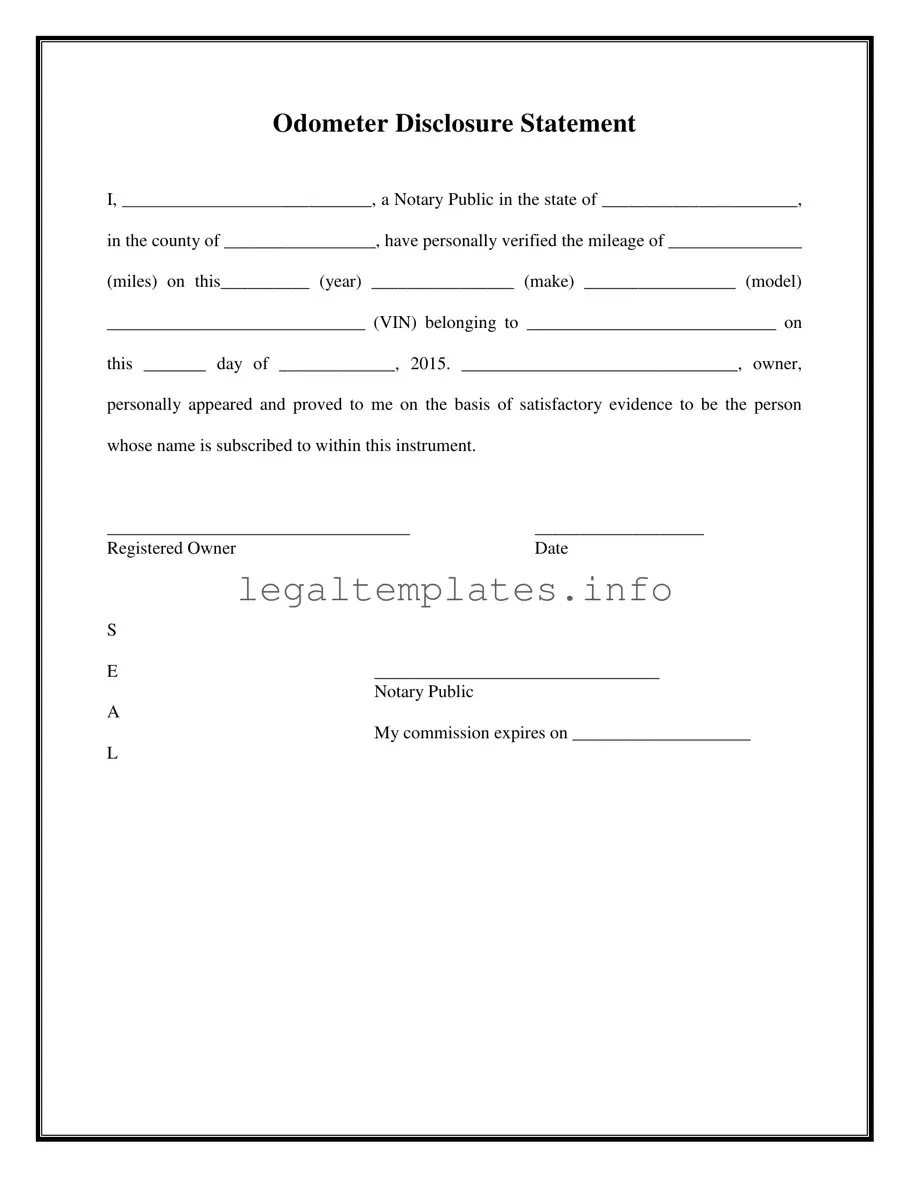The Notarized Odometer Statement form shares similarities with the Bill of Sale. Both documents are integral during the transfer of ownership of tangible goods, like vehicles. While the odometer statement focuses specifically on certifying the mileage of a vehicle to prevent fraud, the Bill of Sale confirms the transaction itself, detailing the item sold, the purchase price, and the parties involved. Both are often required in vehicle transactions to ensure transparency and protect the interests of both buyer and seller.
Similar to the Power of Attorney (POA), the Notarized Odometer Statement form requires notarization to verify its authenticity. The POA grants one individual (the agent) the legal authority to act on behalf of another (the principal) in financial, health, or other matters. Although serving different purposes, both documents rely on notarization as a critical step for legality and to prevent fraud, underscoring the importance of the notary in validating the identity of the signatories.
The Title Application form, like the Notarized Odometer Statement, is a vital document in the process of owning and registering a vehicle. The Title Application is used to apply for a legal certificate of ownership, while the odometer statement provides a certified record of the vehicle’s mileage at the time of sale. Both forms are required by state departments of motor vehicles to finalize ownership transfer and accurately record essential details about the vehicle.
Quite similarly, the Vehicle Registration form is another document related to vehicle ownership and usage. The registration form, filed with a state's motor vehicle department, allows a vehicle to be legally driven on public roads. Together with the Notarized Odometer Statement, which verifies mileage, they help maintain accurate state records and ensure vehicles meet legal standards for operation.
The Warranty Deed, used in real estate transactions to transfer property from seller to buyer, echoes the purpose of the Notarized Odometer Statement in ensuring full transparency and honesty in transactions. Although dealing with different assets, both documents serve to protect new owners by providing verified information — the deed confirming the right to transfer property and the odometer statement verifying the vehicle's mileage.
Likewise, the Loan Agreement is akin to the Notarized Odometer Statement because both pertain to conditions of significant financial transactions. A Loan Agreement outlines the terms between a borrower and lender, including the loan amount and repayment schedule. When purchasing vehicles, such agreements often require an odometer statement to accurately represent the vehicle's condition and value, safeguarding both parties' interests.
The Mechanic’s Lien is another document that, although serving a different purpose, intersects with the process of vehicle transactions like the odometer statement does. This legal document gives mechanics a claim against a vehicle they have repaired or improved but not been fully paid for. While the Notarized Odometer Statement ensures the buyer knows the true mileage of a vehicle, the Mechanic’s Lien ensures service providers are compensated for their work, highlighting protection mechanisms within the automotive industry.
Finally, the Vehicle Service Contract resembles the Notarized Odometer Statement in that it pertains to the condition and maintenance of vehicles. This contract offers repair services and maintenance for a specified time, differing in scope but similar in its aim to provide documented assurances about a vehicle. The odometer statement, on its part, ensures a transparent transaction by disclosing the vehicle’s mileage, while service contracts assure the buyer of ongoing vehicle care post-purchase.

